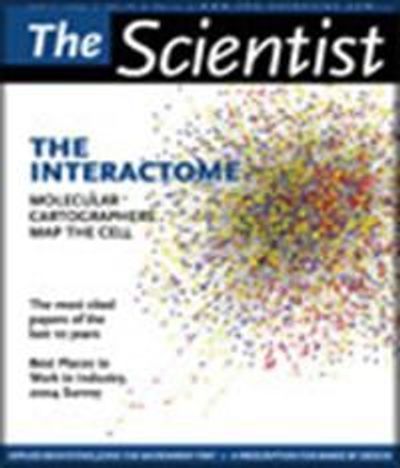1. What's the next level of mapping?
With the human genome sequenced, researchers are charting other cell components. The transcriptome describes all the transcriptional units, coding and noncoding, in the genome. The proteome comprises all proteins made by a cell, while the localizome identifies where each peptide resides. These maps vary depending on a cell's age, type, and condition. The glycome and the lipidome map two other classes of biomolecules, carbohydrates and lipids, respectively.
2. How do these pieces relate to each other?
While some researchers are constructing the interactome (
3. Can model organisms offer any insight?
Just as comparative genomics helps explain the human genome, studying maps of other organisms offers clues about similar networks in humans. Researchers are comparing interactions...
4. How can scientists access this information?
Several databases for protein-protein interactions have been constructed, including the Database of Interacting Proteins (DIP), sponsored by the University of California, Los Angeles; and the European Bioinformatics Institute's IntAct. The Biomolecular Interaction Network Database (BIND) contains information about complexes formed between proteins and pathways created by protein interactions; the General Repository for Interaction Datasets (GRID) includes separate collections for yeast, fruit fly, and
5. How do these interactions fit together?
Integrating data into a comprehensive biological model of an organism is the ultimate goal of systems biology, and many researchers are already undertaking the task. For example, the Seattle-based Institute for Systems Biology aims to model the relationships between all genes, proteins, cells, tissues, and organs in an organism. They have projects underway in bacteria, yeast, sea urchins, and mice. Pacific Northwest National Laboratory's systems biology program focuses on cellular networking in microbes.
- Maria W. Anderson
Interested in reading more?




